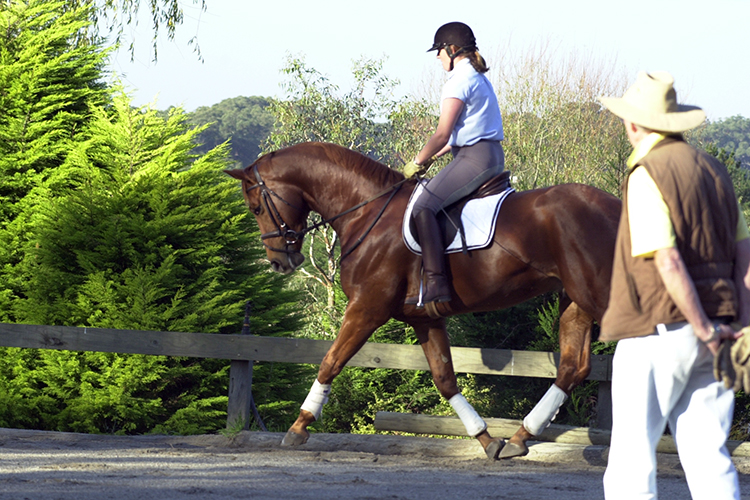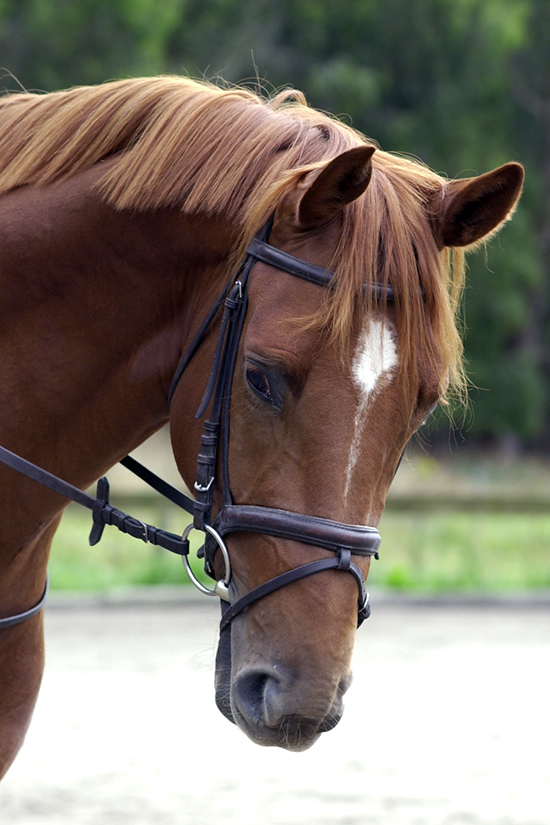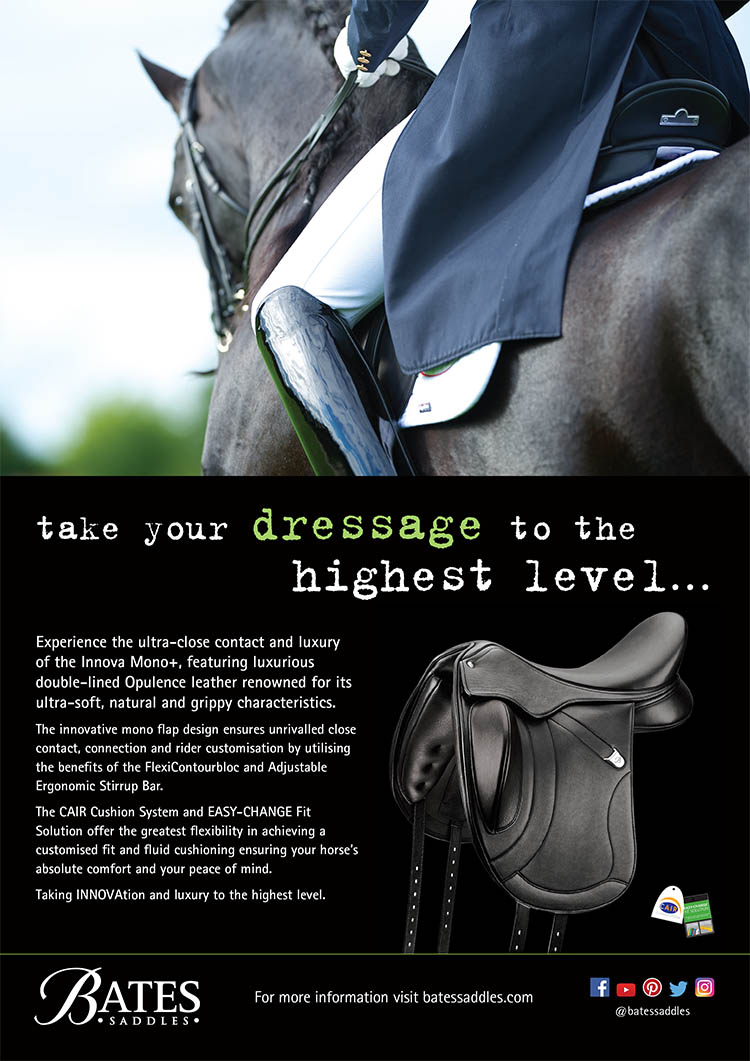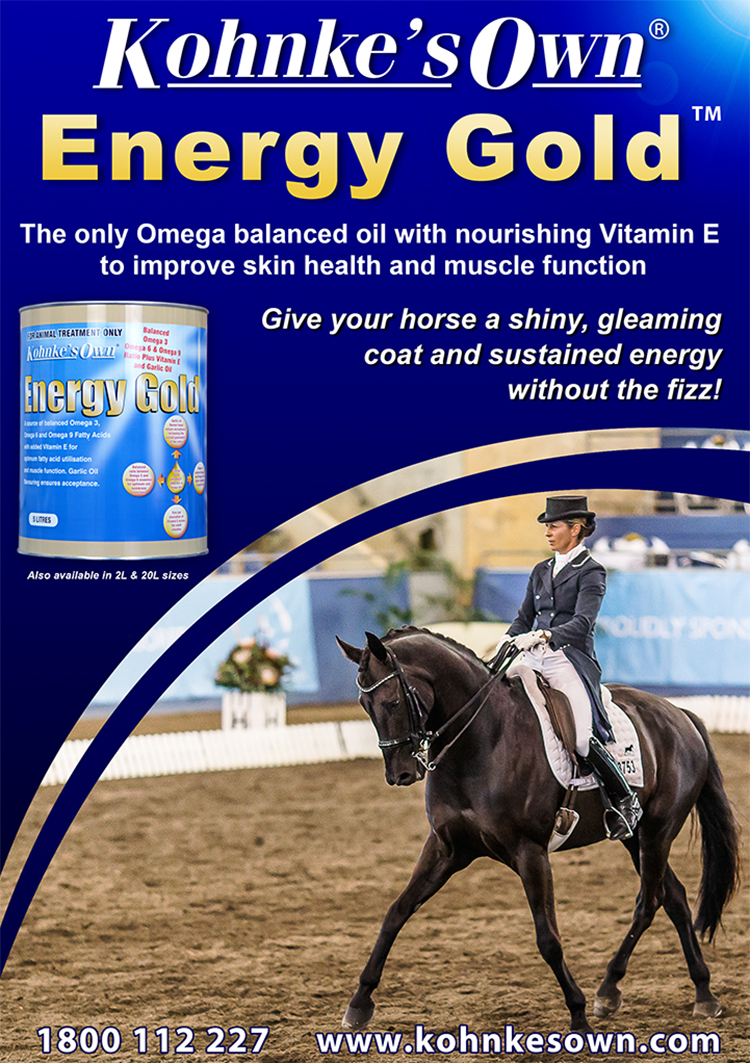 Words by Chris Hector and photos by Roz Neave
Words by Chris Hector and photos by Roz Neave
In part one, we left Champ happily lunging with master dressage trainer, Malcolm Barns. This time, Samantha Bartlett is back in the saddle and Malcolm is happy with the quality of the work he is seeing:
“At this stage, I think Sam should be working on straight lines to push Champ forward a bit more. Circles to get him using the inside hind leg a bit better. Using the circle she can get some loosening to the inside.”
“I like the ‘diamond exercise’ – you ride straight from the middle of the short side to the middle of the long side. That makes you use your outside aids to stop them drifting out. I start on this exercise fairly early, but I’m not too demanding at first.”
“Initially with the young horse it is quite acceptable if he has his front out and his hindquarters in. If you are too obsessive with bringing the front in, you may succeed, but you will put the hindquarters out, which is a very bad fault.”

“Slightly quarters in is not a serious fault and you can use that position so that when you go to canter, he is in a position to use the leg you want. Many riders pull the front in and then the horse canters on the outside leg. So you’ve really got to put the front out, but actually you are putting the front in front of the hindquarters. Kyra Kyrkland said that when she came to Dressage with the Stars, that if you had the front out, you were going to lead with the correct leg, and this was quite acceptable with a young horse. You are really opening up his inside so he so he will hit the leg you want.”

“Later when you come more to collection you have to put him more on one track, and when you do have collection, you can start placing his front in.”
“I like the frame Sam is riding Champ in. People are so mixed up in their terminology – particularly in regards to behind the bit and on the forehand. Horses can be very very deep and not necessarily be on the forehand. On the forehand is when they hang and then the centre of gravity goes further forward than it naturally is.”
“Unfortunately some judges can’t see this, if the horse is behind the vertical or a little bit low, they will say ‘on the forehand or overbent’ and it may be neither of those things. It’s a shame, when we get the overseas judges in Australia to help us, they help the A and B judges and not the novice judges. Then the Novice judges try to judge novice classes as if they were judging at Grand Prix standards…”

“Here he is accepting the rein nicely, the ears are pushed away – he perhaps could be a little longer. Here we are working on direct flexion, because this is the roundness through the body as opposed to roundness from side to side of left and right flexion. In fact he could be a little deeper.”
One concept that Malcolm used in the lesson that we found fascinating was that of ‘pushing the ears forwards’:
“You don’t want to try and make the horse’s neck longer by dropping the reins because if you do that the horse will go longer – but longer on the underside of its neck. I think it was Paula Price who wrote something about ‘push the ears away’ – and I thought that is good because riders can relate to that. I don’t mean that the horse has its ears pricked as opposed to being back, but that it is stretching the top line.”
Interestingly, this master of rhythm feels that in the early stages, the horse has no rhythm:
“Initially when you are teaching the horse to become regulated, they don’t learn rhythm, because if you put someone else in charge of them, they would just run. What you are teaching the horse is to be regulated, and teaching that it is perhaps better to have a slower rhythm, than having them too fast. At this stage they might not track up – later as you push them and they get a bit more forwards, they will track up. They can only get as far as a straight line dropped from the nose, and that is as far as they can go with the hind leg, and they don’t really over-track until you can bring them regulated and for that they have to have a slow rhythm. If you try for a faster rhythm at the beginning they won’t move any more, they just go faster and they learn to run.”

“This is what I call a schooling trot, or schooling canter or schooling walk. It is not a medium walk or trot or canter or even a working walk, trot or canted because in both of those the horse is up, that is a competition pace. This is a schooling pace. Here he is very nice and deep.”
“A lot of people, push their young horses, saying ‘come on, he’s not tracking up’ but all that happens is that the horse goes faster and they still don’t track up, because they are not using their bodies.”
“It’s a great help to count your rhythm. I was amazed when I was working in Germany, the children sing, they play the piano or violin, they go dancing, and the rhythm is built in, they don’t even realise they have it, it is almost automatic. As well as that the children go to gymnastics, callisthenics, they learn rhythm from swimming.”
‘Riders can develop that feel by learning to count the outside front leg of their horse. I like to count in sixes: not just ONE/TWO, ONE/TWO because that can speed up and you don’t notice it. But if you count up to six, I find you can hold the rhythm better. There’s one girl I teach, and she was a ballet dancer, and her rhythm is just automatic, she just feels it. And that is what you have to do as a rider, get it automatic in your body, then you can regulate the rhythm of the horse.”

“Sam is testing with her inside rein now, and that is necessary so you don’t hang on the rein. Testing the inside rein shows not only that you are not hanging on to the rein, but also that the horse is moving from the inside leg to the outside rein. Ultimately we want the horse to balance to the outside. So Sam has moved her hand forward to make a loop, later we can test with both reins, to test self carriage, but here we are just testing that the balance is moving to outside from the inside leg.”
“It’s great to see Sam ger her chance with such a nice horse. She came to Oakwood when she was 18 or 19, a really talented kid, and you don’t get many highly talented pupils. We have a large base but the top riders are few. It is wonderful to see her now with such a lovely horse. I hope she just takes him slowly, but she’ll get there – she has had the experience of taking her other horse, Party On to Grand Prix. I think she’ll get there with this one.”

“Sam has had to work her way, which is very different from buying a trained horse. You can buy a trained horse and in five minutes you can ride the thing (Sam would be able to ride it in two minutes!) but training them to get there is very different to sitting on a horse someone else has made.”
“If she keeps going the way she is, she is going to make something very exciting with this one.”

“Sam’s hands are a little bit wide but Champ is a young horse and she has an even contact with both reins. It doesn’t look as if she is pulling on the inside rein. If you pull on the inside rein, it is going to pull the balance to the inside, and you want it to go to the outside, letting him step across with his inside hind leg.”


Thank you, very interesting.